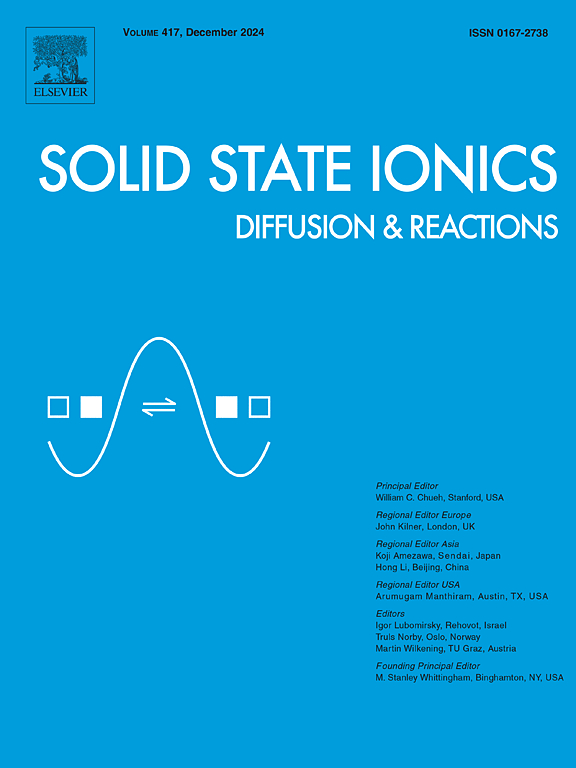Phase field simulation of effect of ceramic composite separator on the growth of lithium dendrites
IF 3.3
4区 材料科学
Q3 CHEMISTRY, PHYSICAL
引用次数: 0
Abstract
The uncontrollable growth of lithium dendrites has a huge impact on the practical application of lithium metal batteries. The separator is an integral element of the battery and fulfils two functions: firstly, it ensures the normal operation of the battery, and secondly, it is effective in inhibiting the growth of lithium dendrites. The present paper proposes the establishment of a two-dimensional phase field model, with the objective of investigating the effects of the ceramic composite diaphragm phase and the PE separator diaphragm phase on lithium dendrite growth. This investigation is conducted under conditions of stress and temperature fields. It has been shown that the elastic modulus of ceramic particles is greater than that of lithium metal. Therefore, the ceramic separator can effectively prevent the growth of lithium dendrites under stress-coupled conditions. In addition, at higher temperatures, it is beneficial to the transport of lithium ions and increases the deposition of lithium dendrites in the tip and non-tip regions, thereby reducing the length of lithium dendrites at high temperatures. This study reveals the important influence of the ceramic separator on inhibiting the growth of lithium dendrites under the conditions of stress field and temperature field.
陶瓷复合隔膜对锂枝晶生长影响的相场模拟
锂枝晶的不可控生长对锂金属电池的实际应用产生了巨大的影响。隔膜是电池的一个组成部分,它有两个作用:一是保证电池的正常工作,二是有效抑制锂枝晶的生长。本文提出建立二维相场模型,研究陶瓷复合膜相和PE隔膜相对锂枝晶生长的影响。本研究是在应力和温度场条件下进行的。结果表明,陶瓷颗粒的弹性模量大于金属锂颗粒的弹性模量。因此,陶瓷分离器可以有效地防止应力耦合条件下锂枝晶的生长。此外,在较高的温度下,有利于锂离子的运输,增加了锂枝晶在尖端和非尖端区域的沉积,从而减少了高温下锂枝晶的长度。本研究揭示了在应力场和温度场条件下,陶瓷隔膜对抑制锂枝晶生长的重要影响。
本文章由计算机程序翻译,如有差异,请以英文原文为准。
求助全文
约1分钟内获得全文
求助全文
来源期刊

Solid State Ionics
物理-物理:凝聚态物理
CiteScore
6.10
自引率
3.10%
发文量
152
审稿时长
58 days
期刊介绍:
This interdisciplinary journal is devoted to the physics, chemistry and materials science of diffusion, mass transport, and reactivity of solids. The major part of each issue is devoted to articles on:
(i) physics and chemistry of defects in solids;
(ii) reactions in and on solids, e.g. intercalation, corrosion, oxidation, sintering;
(iii) ion transport measurements, mechanisms and theory;
(iv) solid state electrochemistry;
(v) ionically-electronically mixed conducting solids.
Related technological applications are also included, provided their characteristics are interpreted in terms of the basic solid state properties.
Review papers and relevant symposium proceedings are welcome.
 求助内容:
求助内容: 应助结果提醒方式:
应助结果提醒方式:


